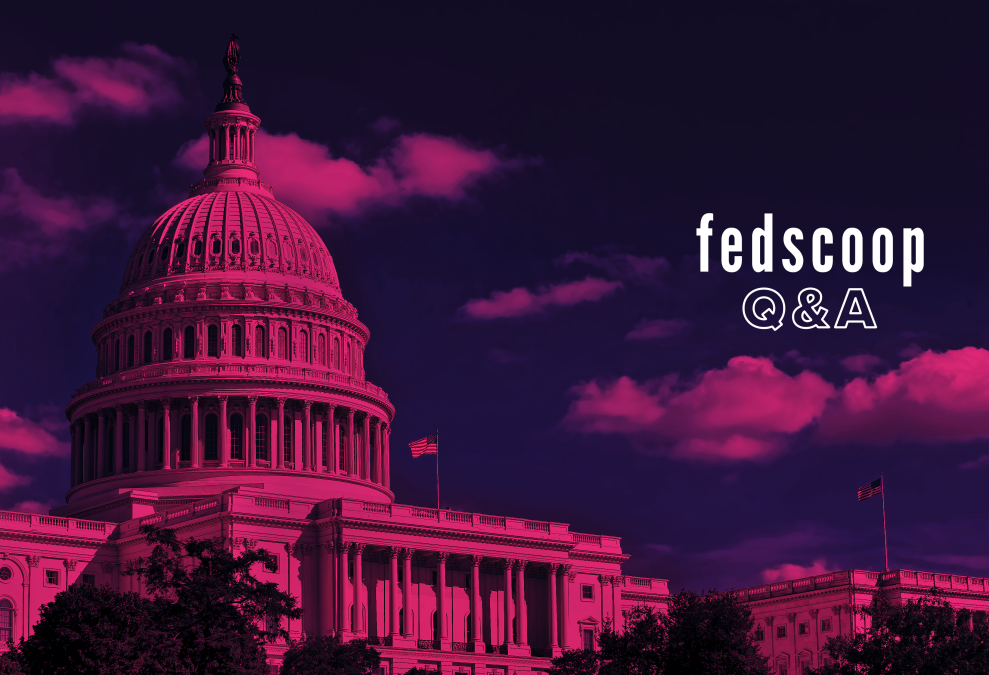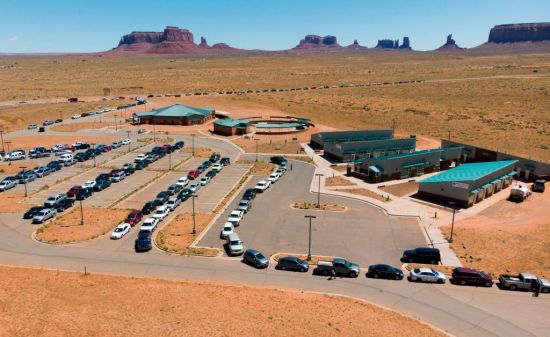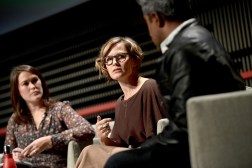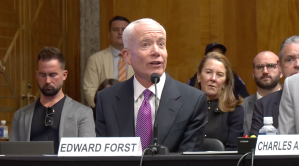Beth Angerman on the new shared services office and tech standards in government

Beth Angerman knows federal IT modernization will require a whole-of-government response. It’s one of the reasons the executive director of the Unified Shared Services Management office decided to merge it with the Office of Executive Councils to form the Office of Shared Solutions and Performance Improvement.
The new office will house the federal councils for CIOs, chief acquisitions officers and chief financial officers, as well as the Performance Improvement Council, the President’s Management Council and the President’s Management Advisory Board. The goal is to drive the future of IT modernization and centralize the government’s game plan for shared services.
Angerman spoke with FedScoop about the new office and its impact on modernization efforts in a new FedScoop Q&A— a series of interviews with top federal IT executives.
Editor’s note: The transcript has been edited for clarity and length.
FedScoop: Prior to the merger of USSM and the Office of Executive Councils last month, you talked about how the two teams had been working together as “an unofficial integrated team.” How did the idea of a merger develop and how does it better facilitate shared services goals?
Beth Angerman: I think the stars started to align back in the summer. When we first set up USSM and it was part of the Office of Governmentwide Policy, we put it there for a reason. It was because there were a lot of synergies across the different programs that Governmentwide Policy ran in terms of trying to implement strategic work that was really coming from [the Office of Management and Budget].
And one of the offices at USSM really started partnering closely with was the Office of Executive Councils, because of the alignment of stakeholders. USSM’s mission is to try and improve the quality and the footprint of administrative services across government. The biggest and most important constituents in helping to actually affect change would be the C-suite, and the C-suite is effectively meeting and being coordinated by the Office of the Executive Councils.
So we were so close and we were partnering so often in terms of how we were reaching out to the council, how we were collaborating with them, how we were getting feedback from those stakeholders and informing the strategy going forward for improving administrative services. So it, honestly, just started to make sense because of that close relationship.
FS: We often talk about technology when it comes to shared services, but it also includes things like human capital services, financial services and other functions that the Office of Executive Councils has insights into. How important is it to have these folks that are really on the top level of those issues, leveraging their experience, leveraging their insights, to carry out the mission functions that you’re working on?
BA: It’s incredibly important. It was the key driver as to why we thought it made sense to create the Shared Solutions and Performance Improvement Office. All of the future direction for all of these administrative support services for government really need to be informed, most importantly, by the C-suite. There needs to be more collaboration across the C-suite as well. So it’s not even just working with the chief financial officers, it’s helping to bring together the chief financial officers and the CIOs so that we can understand how IT and IT modernization can ultimately impact and improve the business of financial management.
I think that’s the important nexus of the two goals, which is to recognize achievement across the C-suite and across the councils. There is an opportunity for us to collaborate more so that we have an even more effective vision going forward.
FS: The merger became official on Feb. 18, are you still merging workflows at this point or is the new office fully operational?
BA: I think we are really operating as one team. We’ve combined a lot of the work that we’re doing and the resources to really align with some of the priorities that are coming out with the President’s management agenda. We are really focused on helping to make those priorities successful, again with the engagement of stakeholders, but it’s also important to acknowledge the engagement we have within GSA as well.
A lot of the other groups in GSA are also trying to promote this idea of IT modernization, smarter government and more efficient government. I think what you are starting to see in and across GSA are some of these common themes on how GSA is really helping agencies identify what success will look like and sharing best practices on how to get there.
FS: Now one of the challenges for CIOs, even since the implementation of FITARA, is attaining a seat at the table in determining their agencies’ IT portfolio and their modernization efforts. Do you think incorporating the CIO council in this office achieves that goal?
BA: I hope so. It depends. It’s still very early, right? So we are still working on how exactly all of the integration will work on a regular cadence, but the intention of this is to do exactly what you said: to make sure we have all of the voices of the key stakeholders at the table helping to advise on a path forward.
I think it’s really important from an IT perspective to recognize that we are not modernizing IT just for the sake of modernizing IT. We are modernizing IT to help the rest of the C-suite more effectively do their business or to ultimately help the mission areas of these agencies more effectively deliver to taxpayers.
So, I think we need to do a better job as a government really identifying what problem it is that we are trying to solve. And that problem has to be a shared problem across the C-suite, where everyone feels engaged and accountable for driving the agency forward and helping to address and come up with a workable solution.
FS: Do you feel like your work on standardization is setting up a bedrock technology that agencies can use as a baseline, but then address their unique mission function with specific technologies that can integrate?
BA: Yes. It’s the pillar to what I believe, which is actually that if we don’t agree on what we are buying, then we are not going to be able to achieve the outcome that we are all hoping for: that we can get to scale and drive more efficient processes across government.
IT is one of the key areas and key tools that will help us steer that, but we have to agree that we are all buying the same capabilities in those solutions, and then we also have to be open to a new way of doing business. And I think those two things are critical as we think about IT modernization going forward.
It’s this new IT — IT that is commercially available, where industry is constantly investing in their products — that IT is what we want to bring to the government. But that IT will also challenge the government to think differently about how we do our business. Because it’s going to bring, if we do this right, it should bring innovation. It should bring processes that aren’t manual. It should bring things that are more digital.
And so we have to be receiving that new process, and that’s where it translates into a leadership challenge in terms of really setting expectations with the workforce that the workforce will be able to adapt and accept these new processes and really think about how the workforce adds value back to the mission.
FS: In terms of the standards conversation, where are we right now?
BA: We stood up the methodology about a year ago. We have all of the key agencies responsible for doing the methodology really engaged in our business standards council, which is a crossline of business group of experts that are collaborating to make sure that standards developed in the financial management space are accepted by those in the procurement space and the human capital space and vice versa.
One of the first products that you can see as evidence of the business standards council’s work are the standards that we included in the draft [request for proposal] that we released for payroll and work schedule events.
That’s a product, if you will, of the work that we are doing in government and shows that we are actually experiencing a fair amount of success in accomplishing and documenting these standards so we can ultimately move forward with buying what we hope to be software as a service.






